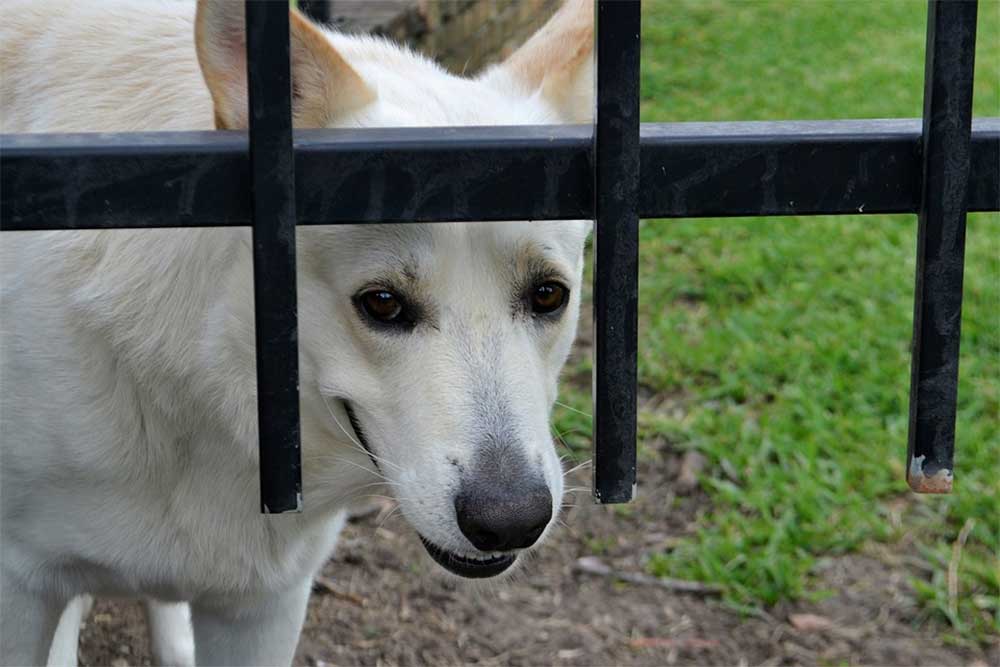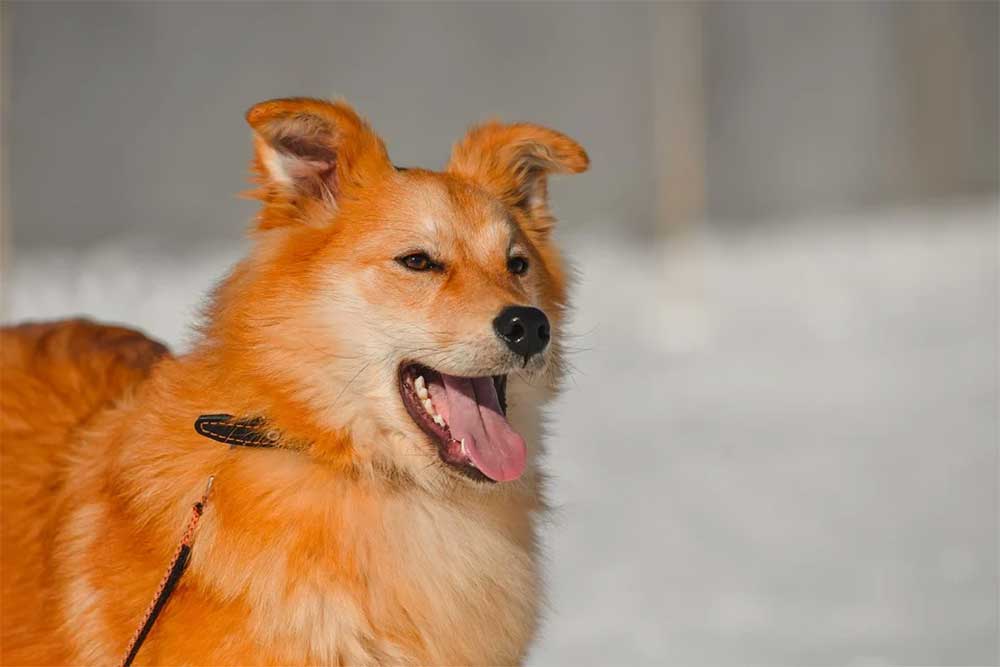Neutering is a big decision for owners to make, but it’s ultimately for the best. However, neutering is a serious procedure that requires a period of rest following, which means your dog will be housebound. For some nature-loving dogs, this can be a total nightmare – they’re already feeling sorry for themselves, and now they can’t even enjoy their favorite hobby.
Slow and steady wins the race— it’s important to ease your dog into the walking process if he’s recovering from surgery. He may seem excited and eager to leap around but this isn’t necessarily good for him. Each dog is different, so you should keep an eye on how yours reacts when weight is applied before deciding whether or not to take him on a walk.
And if you decide to do this, you’ll need to determine how long the walk should be. This will prevent your dog from becoming exhausted, dehydrated, and possibly in pain. If you’re unsure, you should seek expert advice from your veterinarian.

First 24 hours
The day following surgery will be the most difficult for your dog. They may feel drowsy as a result of the anesthesia and stitches, so forcing your dog to go for walks at this point would be unwise. Besides, your dog won’t have the energy to move because they will most likely just want to get some rest.
You should always keep a water bowl nearby for your dog. Check to see whether they still have water as often as you can. You don’t want to feed them just yet, though. It is better to wait until the anesthetics wear off before they eat. They may also be a little loopy and off-balance as a result of the sedatives, so you should check up on them often to make sure they’re still safe.
24 – 48 hours after surgery
Vets usually advise dogs to rest completely for up to 48 hours after surgery. While some dogs may regain strength at this point, the stitches can pose a risk of infection. If your dog walks too forcefully, there is a chance that the incision can open and cause bleeding.
Going for a walk outside is still not possible 2-3 days following surgery. Even if your dog appears to be ready, the risk of infection is too great. Furthermore, dogs with a high prey drive may see something and automatically chase after it.
72 hours after surgery
Three days following neutering, you should schedule a post-surgery checkup appointment. While the incision is probably healing well at this point, you should still keep a watchful eye on your pet’s health and the fresh stitches. Your vet may recommend reintroducing small walks inside your home, depending on your dog’s energy level.
They will be able to address some of your questions and offer you further information on when you can begin walking your dog. Remember to follow your veterinarian’s recommendations. Even if they say the incision appears to be healing well, it doesn’t mean it’s immediately safe to resume normal living.
4 – 9 days after surgery
Your vet should be able to provide you with more precise information on days 4-9. They may tell you to try some indoor walks to get your dog’s body used to walks again.
They may also suggest you limit their movement if they think you’re pushing your dog too hard. Because each dog heals at a different rate, don’t try and rush them into it.
10 days after surgery
Dogs can undertake mild exercises in a confined environment after ten days have passed, providing they’re in good health. You can also begin walking for short distances, but you should avoid overworking your dog too soon.
How long after neutering can I walk my male dog?
Neutering usually refers to the removal of the testicles of a male dog, also sometimes known as castration. After surgery, a male dog’s exercise should be limited to leash walks and no rough play for a week. Male dogs are often fine to resume normal exercise shortly after neutering. In most cases, this would be within around two weeks.
If you have any concerns, see your veterinarian. Within 14 days, the skin incision should have healed. Dissolving stitches may be used by some vets. If the stitches aren’t dissolvable, you’ll more than likely have to take your dog back to the vet to get them removed.
During the first two weeks following the surgery, you should try to limit exercise to short, relaxed walks that are gradually increased in length. After this two weeks period, your dog should be able to resume the activities they normally enjoy doing. This includes activities such as jumping, playing, and running.
It’s best to avoid rushing into high-energy activities too soon. This is because your dog will have lost some fitness and conditioning from the two weeks of inactivity. Build their physical activity back up gradually to avoid injury.
How long after spaying can I walk my female dog?
Spaying usually refers to a routine abdominal surgery that is carried out on female dogs. It is considered a major operation, so your female dog will need adequate rest before you plan to take her for a walk.
Within 14 days, the skin incision should be healed. The inner wall of the abdomen, on the other hand, won’t yet be fully healed. If possible, avoid leaving your female dog alone during the first two or three days after spaying. This is probably the most important stage of the healing process.
After two weeks, you can slowly increase the length of your walks. It is recommended not to rush back into high-intensity activities like rough play, sprinting, and leaping. Ideally, you should keep your female dog on a leash or make sure she isn’t overly active when off-leash for about a month after the surgery.
What happens if I walk my dog too soon after surgery?
If your dog strains while walking, it may increase swelling, delaying the healing process. As a result, this risks opening the incision and having to replace your dog’s stitches.
After neutering, dogs are at significant risk of infection, therefore going outside exposes their body to a lot of germs. Similarly, your pet’s muscles may break down as a result of exhaustion. All of these might aggravate pain, delaying your dog’s recovery.
How far can I walk my dog after being neutered or spayed?
The answer depends on your dog and whether they are used to getting a lot of exercises every day or just a little bit. It is recommended that your dog only do 50 percent of their daily routine after three days of post-surgery treatment and only 25 percent before three days, depending on recuperation. However, you can confirm this with your veterinarian at your three-day check-up appointment.
Allow your dog to tell you when they’re ready to go for a walk; don’t take them if they’re not asking. Keep the early walks away from anything that could distract them and make them want to flee, such as hostile dogs, cats, tiny animals they like to chase, and so on. Maintain a gentle pace and a short distance. Instead of wondering how soon I can walk my dog after neutering, consider how quickly you can assist them.
How to speed up the post-op recovery process

You can do a few things at home to improve your dog’s stamina and ensure that their exercise levels return to where they were before neutering or spaying. One way you can do this is by keeping them confined to one room or small space in your home to prevent them from running around and possibly hurting themselves.
Some people opt for a crate for the first couple of days following the surgery. While this may not be necessary, if your dog doesn’t mind being in a crate and feels safe and comfortable there, he may want to go there to recover and heal. If using a crate, you’ll have to remember to let your dog out for regular toilet breaks to prevent any accidents.
Keep an eye on the stitches, how they’re healing, and if it is beginning to scar. Some signs of infection include yellow pus oozing from the wound. If this occurs, you should wipe it away with warm water and a clean cloth. Following this, you should book a vet appointment as soon as possible just in case your dog has a serious infection.
Use no rubbing alcohol or peroxide. These might cause discomfort and delay the whole healing process. If you notice the affected area turning red and inflamed, with seeping pus, or if there are any obvious gaps around the stitches, this could be an indication of infection.
If your veterinarian believes the infection risk is low, they may not offer antibiotics. However, because pain medicine is usually always recommended, this does not happen very often. Dogs with a lot of energy may even be given sedatives and anti-anxiety drugs. Before considering any home remedies, it is critical to check with your veterinarian first. Most of these cures are drug-free, but you want to make sure they won’t harm your dog while they’re healing.
Just being there is the most important thing you can do when caring for your dog at home after surgery. Pets in recovery require more attention and care from their owners. Spend as much time with your dog as possible, without overwhelming them. Even just being in the same house is enough as dogs are comforted by background noise. This can help keep your dog relaxed while he or she is healing.
Final Thoughts
There’s no definitive answer to how soon after surgery you should walk your dog and for how long. No two dogs are the same, so you should use your own best judgment combined with your veterinarian’s advice to come to the best decision for your dog.
When your dog returns home from surgery, you should be there for them to keep them safe and make sure their needs are being met. A happy dog often leads to a healthy dog!
